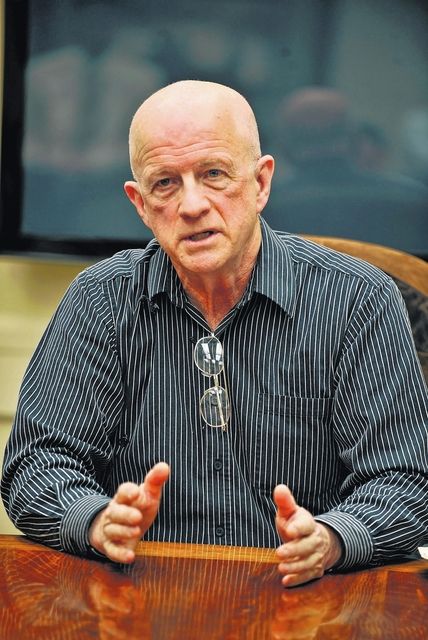Click here to subscribe today or Login.
On the plus side, Luzerne County’s employee pension fund is valued at a new record high of $227.5 million.
However, this pension pot is still only 76 percent funded when required payments to current and future retirees are factored in, which means there is no end in sight to annual shoring up by taxpayers, officials said during Thursday’s county retirement board meeting.
As county Manager C. David Pedri bemoaned continued pension subsidy increases from the strapped general fund operating budget, he and other board members discussed plans to add riskier alternative investments that could pick up more of the slack.
The fund’s current allocation is 44.6 percent bonds, 37.5 percent stocks, 10.2 percent alternative and 7.7 percent cash.
Richard J. Hazzouri, of Morgan Stanley, the fund’s overall adviser, recommended shifting to this mix: 30 percent bonds, 40 percent stocks, 25 percent alternative and 5 percent cash.
The investment changes, which are slated for board approval in July, are warranted because Morgan Stanley expects more “muted returns” in the stock market, Hazzouri said.
He anticipates a return of about 7.4 percent with the new formula, which would carry a volatility risk he described as “palatable.”
Calculation of the required taxpayer subsidy is based on an assumed overall investment return rate of 7.25 percent.
A year-to-date investment return of 6.3 percent was reported for the fund Thursday, resulting in $13.4 million in earnings in 2017.
Hazzouri’s plan would add more investment in private real estate through portfolios in a fund, as opposed to buying a stake in specific structures. The main con is that these types of investments are typically locked in for a decade or more, preventing quick liquidation to access cash for bills, he said, promising prudent recommendations.
Taxpayer subsidies
The county administration paid an $8.1 million pension subsidy from the general fund in April, but this payment was for 2016 because officials have not yet come up with money to correct a long-standing problem of paying a year late, officials said.
Delayed payments cause the fund to miss out on investment earning potential, they added.
Pedri said the subsidy has increased by about $700,000 annually and is projected to total more than $9 million in 2018. The general fund operating budget is $134.85 million this year.
“I’m looking for some sort of strategy, some sort of idea,” Pedri said. “I can’t continue to go to county council and say we need another tax increase to support a pension.”
He made a suggestion about halting increases in taxpayer subsidies until the county repays approximately $325 million in debt a decade from now. The county should be in a position to dish out a lump-sum payment to catch up at that time, he said.
But Hazzouri and others said this approach would backfire and cause subsidies to possibly double down the road because the actuary’s projections were based on an assumption increases would be paid and generating investment returns that compound annually.
Retirement board member Eugene Kelleher, a county councilman, and others said a fully funded pension and adherence to an actuarial plan must remain a goal.
“I understand the pressure you’re under David, but we’ve got to think longer than 10 years,” Kelleher told Pedri.
The fund is projected to be 80 percent funded within seven years and more than 90 percent funded within 15 years, said county retirement coordinator Rick Hummer, citing actuarial analysis.
Each month, $1.4 million in pensions to 1,300 retirees are paid from the fund, Hummer said.
A total of $181 million in pension payments are anticipated over the next decade, according to Hazzouri. About $362 million is needed “to get rid of this problem,” he added.
“Promises were made, and it’s time to make good on those promises,” Hazzouri said. “The promise tsunami is on us.”
Approximately $675,000 is spent on administration costs annually, including payments for money management, said Hummer, noting it’s a reduction of 66 percent compared to nine years ago.
“We’re dropping expenses as much as we can,” he said.
The fund had plunged to $151.8 million before Morgan Stanley took over as pension adviser in September 2008, replacing Merrill Lynch. The fund’s high value before Morgan Stanley was at the helm was $210 million in 2007, records show.






